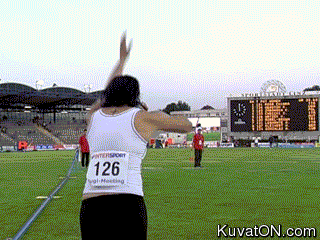 |
CineFix presents the 10 best fight scenes in the history of cinema.
Nothing pumps up the action in a movie more than two (or more) skilled fighters just going at it. Be it a raw combat or CGI-assisted set pieces, every punch and kick in these fights is a step in an intricate dance.
THE LIST
The Matrix (1999)
Fight Coordinator: Yuen Woo-Ping
This movie was jam-packed with awesome fight scenes, but the Agent Smith vs Neo fight in the subway is a the ultimate combination between special effects and hand-to-hand combat.Raging Bull (1980)
Director Martin Scorsese made the bold and unusual choice to put the camera inside the ring in the final fight with Sugar Ray Robinson, showing the fight from a boxer’s POV.Ong Bak (2003)
Choreographer: Prachya Pinkaew
The movie that introduced the world to Tony Jaa, and fight choreographer Prachya Pinkaew, this is a full-throttle, no-holds-barred fight – no wires, no effects, just Muay Thai.The Bourne Ultimatum
Fight Stunt Coordinator: Jeff Imada
This movie makes the bold choice of shooting a fight scene without music, letting the sense of urgency and action come completely from the fighters (and the props they throw at each other, hit each other with, and crash through, of course).Hero (2002)
Fight Choreographer: Chium Siu-Tung
The Grey Fight between Jet Li and Donnie Yen is one of the most perfect weapons fights ever filmed, elevated by the fact that it takes place entirely within the two characters’ minds… until the end.Kill Bill Vol. 1
Fight Coordinator: Yuen Woo-Ping
A nod and send-up of 70s Kung Fu flicks, the Bride takes on an astounding number of bad guys, resulting in gushes and gushes of blood, and a plucked-out eye.Crouching Tiger, Hidden Dragon (2000)
Fight Coordinator: Yuen Woo-Ping
Director: Ang Lee
There’s some beautiful wire work in Crouching Tiger, but for sheer precision and skill on display, we love the training-hall face-off between Michelle Yeoh and Ziyi ZhangKillzone SPL (2005)
Choreographers: Donnie Yen and Wu Jing
Yen is a martial arts legend, and his fights could comprise a list in and of itself, but this largely improvised fight has to be one of the most impressive achievements.Legend of the Drunken Master (1994)
Choreography: Jackie Chan
A true classic of Jackie Chan’s work, the final factory fight couldn’t be a more pure expression of Jackie Chan’s style.Enter The Dragon (1973)
Choreographer: Bruce Lee
We couldn’t go any other way with the #1 on this list. Without Bruce Lee’s incredible skills, and this iconic fight, movie fights wouldn’t be what they are today.
The one inch punch was made famous by Bruce Lee. It is designed to improve punching power and technique. Lee learned the technique from his Wing Chun training in Hong Kong.
Recently Popular Mechanics set out to solve the mystery behind it.
To understand why the one-inch punch is more about mind than muscle, you first have to understand how Bruce Lee delivers the blow. Although Lee’s fist travels a tiny distance in mere milliseconds, the punch is an intricate full-body movement. According to Jessica Rose, a Stanford University biomechanical researcher, Lee’s lightning-quick jab actually starts with his legs.
“When watching the one-inch punch, you can see that his leading and trailing legs straighten with a rapid, explosive knee extension,” Rose says. The sudden jerk of his legs increases the twisting speed of Lee’s hips—which, in turn, lurches the shoulder of his thrusting arm forward.
As Lee’s shoulder bolts ahead, his arm gets to work. The swift and simultaneous extension of his elbow drives his fist forward. For a final flourish, Rose says, “flicking his wrist just prior to impact may further increase the fist velocity.” Once the punch lands on target, Lee pulls back almost immediately. Rose explains that this shortens the impact time of his blow, which compresses the force and makes it all the more powerful.
By the time the one-inch punch has made contact with its target, Lee has combined the power of some of the biggest muscles in his body into a tiny area of force. But while the one-inch punch is built upon the explosive power of multiple muscles, Rose insists that Bruce Lee’s muscles are actually not the most important engine behind the blow.
“Muscle fibers do not dictate coordination,” Rose says, “and coordination and timing are essential factors behind movements like this one-inch punch.”
Because the punch happens over such a short amount of time, Lee has to synchronize each segment of the jab—his twisting hip, extending knees, and thrusting shoulder, elbow, and wrist—with incredible accuracy. Furthermore, each joint in Lee’s body has a single moment of peak acceleration, and to get maximum juice out of the move, Lee must layer his movements so that each period of peak acceleration follows the last one instantly.
via Neatorama